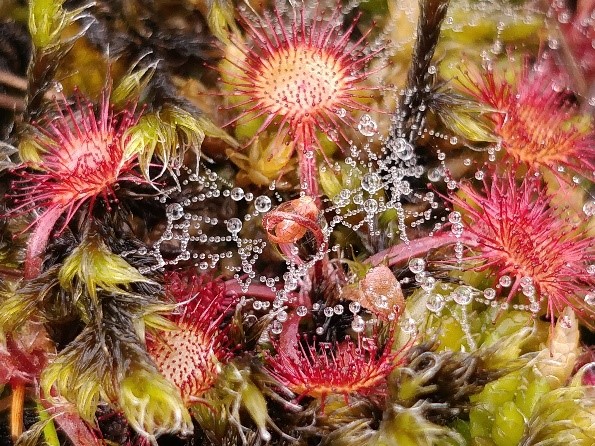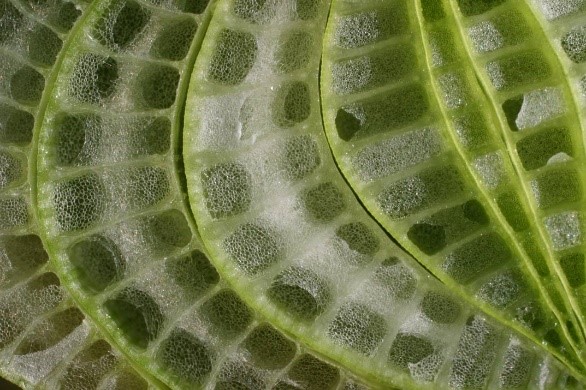Forschung
Die folgenden Kurzbeschreibungen verschiedener Forschungsprojekte sollen Studierenden und allen Interessierten an Praktika, oder Abschlussarbeiten eine Vorstellung von den Forschungsaktivitäten der Arbeitsgruppe geben. Gerne können Sie sich nach möglichen Themen erkundigen; detaillierte Informationen finden Sie auf dieser Webseite im Abschnitt Abschlussarbeiten.
Die meisten Projekte untersuchen eine bestimmte Gruppe von Organismen und umfassen sowohl Feld- als auch Laborarbeiten, wobei letztere sich in der Regel auf verschiedene Sequenzierungstechniken (Sanger, Illumina, Nanoporensequenzierung) oder Methoden zur Abschätzung der genetischen Vielfalt (AFLP, Mikrosatelliten, MIGSeq) konzentrieren.
Die Forschungsziele addressieren meist die Evolution und insbesondere um Artbildung und Hybridisierung bei Pflanzen, Pilzen und Protisten und versuchen, dieses Wissen auch für praktische Zwecke wie den Anbau ungewöhnlicher Pflanzen aus Feuchtgebieten (Paludikultur) oder Heilpflanzen anzuwenden.
2023-2025 SoMoMed – Sonnentau und Moltebeere als Medizinalpflanzen in Paludikultur
Sundew (Drosera rotundifolia) growing in a slight depression in the fjordlands of Norway, with a small spider competing with the plant for prey: miniature insects. The challenge for a possible pharmaceutical use of the plant is to establish cost-efficient methods for cultivation, since over most of its nearly circumpolar range the plant is rather endangered and subject to various restrictions regarding commercial use.
The research project SoMoMed focuses on the research and establishment of a sustainable production of drugs from sundew (Drosera rotundifolia) and cloudberry (Rubus chamaemorus) on peat mosses in paludiculture. The leaves of sundew contain secondary metabolites such as naphthochinones and flavonoids, which show antitussive (acting against coughing) and anti-inflammatoric (inhibiting inflammations) effects. Cloudberry is a widely used "superfood" in Northern Europe due to its high content of vitamin C and E. In addition, extracts from leaves appear to show an antibacterial effect, especially against biofilms of wound-associated bacteria.
Sundew and cloudberry are typical of wet, nutrient-poor raised bogs and can therefore also be grown in combination with peat mosses on rewetted bogs, with the latter mainly used a substrate for gardening soils, especially for ornamental plants. This climate-friendly management (paludiculture) represents an alternative to conventional, drainage-based, agricultural peatland use, which is associated with high greenhouse gas emissions.
The genetic characterization of selected European strains of both species with regard to medically effective ingredients and maximum productivity is intended to create a basis for further breeding selection. Varieties with a high content of active ingredients and high productivity will be selected, and the influence of culture conditions on these parameters will be tested. In the other work packages we will 1. to analyze the market potential for raw material from both species, 2. determine (and minimize) the costs of cultivation, 3. assess the ecological impact of such cultures and 4. develop sustainable business models along the value chain.
Contact: Malte Zörner (coordinator), Dr. K. Kuprina (research associate), Dr. M. Bog (Co-PI)
Funding: Fachagentur für Nachwachsende Rohstoffe (FNR)
Methods: Field collecting and common garden experiments, testing for contents of pharmaceutically active compounds, determining heritability of compound production, assessing genetic variation via microsatellite analysis
Organisms: Sundew (Drosera rotundifolia), cloudberry (Rubus chamaemorus)
Partners: Working groups Experimental Plant Ecology, Landscape Economy, Pharmazeutic Botany (Institute of Pharmacy)
Further information: 2023-2025
2022-2025: PROGRESS – Paludikultur im Praxistest: Optimierung von Rohrkolben- und Schilfkulturen
Cattail (Typha latifolia): cross sections of young, tightly folded leaves reveal the secret of this plant: with a minimum of material a maximum of structure is built, making this plant a suitable material for the sustainable insolation of buildings.
Goal of this project, following an initial project phase (PRIMA) is the cultivation of common reed (Phragmites australis) and bulrush or cattail (Typha spp.) on newly rewetted former mires. We are responsible for the working package 2 (Production of seeds and sawing methods), which tries to establish a method to distribute the very lightweight seeds of Typha via drones, using pellets with bound seeds which will dissolve in water. The idea is to find a cheap method to establish bulrush with a homogenous density on such areas; beside the harvesting procedures this first step to establish a culture is crucial to achieve a net cross value for these cultures. We therefore will investigate germination behavior and initial growth, develop a method to distribute the seeds and control its success.
Contact: Dr. M. Bog (coordinator), C. Moebius (scientific associate)
Funding: Fachagentur für nachwachsende Rohstoffe (FNR)
Methods: Germination experiments, testing substrates for seeds pellets, recording germination ex situ and in situ
Organisms: Bulrush (Typha latifolia, T. angustifolia), Common Reed (Phragmites australis)
Partners: Working groups Experimental Plant Ecology, Landscape Economy
Further information: predecessor project PRIMA


